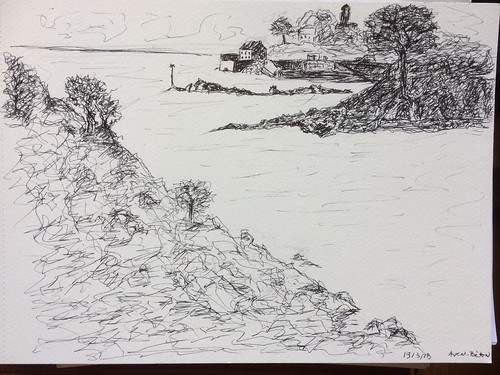All fibrils possess the exact same diameter, this can be explained by Figure A (right panel). Having said that, longitudinal micrographs also reveal fibrils with ml Coll Figure varying thicknesses, and this could be illustrated by Z ,B (appropriate panel). On the other hand, if some fibrils have tapered ends (Figure B, left panel), this method would conveniently mask the facts ml Coll Z . present within the micrograph of Figure B (correct panel).Figure . Schematics in the cross section of fibre reinforced composites. (A) Continuous uniform cylindrical fibre reinforced composite (left panel) from a D perspective. Corresponding D cylindrical fibre reinforced composite (left panel) from a D perspective. Corresponding D perspective buy 1-Deoxynojirimycin viewpoint displaying the plane of interest (POI) containing the crosssections with the uniform displaying the plane of interest (POI) containing the crosssections of the uniform cylindrical fibre cylindrical fibre (correct panel); (B) Discontinuous paraboloidal fibre reinforced composite (left panel, (rightD perspective). Corresponding plane of interest (POI) displaying the crosssections on the paraboloidal panel); (B) Discontinuous paraboloidal fibre reinforced composite (left panel, D viewpoint). Corresponding plane ofD point of view). The fibres ON123300 site numbered on the paraboloidalschematics are fibre (appropriate panel, interest (POI) displaying the crosssections in the D and D fibre (proper panel, D point of view). illustrate their associations among D and D schematics are intended acting on thetheir intended to the fibres numbered  inside the the two views. In part (A,B), the force to illustrate respective composites is in the path of (A,B), the force acting on the respective composites is in associations amongst the two views. In component PubMed ID:https://www.ncbi.nlm.nih.gov/pubmed/16028100 the fibre axis. the direction of your fibre axis. With regards to adult vertebrate, studies have also revealed that taper exists at each ends within the fibrils in postfoetal vertebrates which include the ligaments of rats . Of note, gentamicin option, which Figure Dto be able to weakenof normalized mass per unit length versus fractional axial distance is believed shows the graph the interfibrillar bonds, was applied to soak the tissue so that the fibrils describingbe isolatedof Equations). Thus the analytical model reveals that the ml Z connection might the plots in the adult vertebrate . The presence of naturally tapered terminations in follows a linear connection (Figure D) in a fibril reported applying the technique of serial thinB). Around the intact tendons from chicken embryo has also been which has a paraboloidal shape (Figure sections other analysis .lThis observation is confirmed when fibrils are isolated from chick embryonic tendons hand, the m Z plots (Figure D) for a fibril with conical ends (Figure A) and ellipsoidal shape byC) show nonlinear decreasing ml with enhance in Z. In presence of the conical shape yields a (Figure mild mechanical indicates ,. Therefore the evidence with the unique, tapered fibrils, whichFigure . Schematics of your cross section of fibre reinforced composites. (A) Continuous uniformconcave profile though the ellipsoidal shape yields a convex profile (Figure D). Finally, we locate that the uniform cylindrical shape yields an even distribution of ml independent of distance along the fibril. To quantify the shape of those tapered fibrils, the unique ml Z relationships had been fitted to distribution of mass as a function of axial position along the fibril derived from scanning transmission electron micrographs of reconstit.All fibrils possess exactly the same diameter, this could be explained by Figure A (proper panel). However,
inside the the two views. In part (A,B), the force to illustrate respective composites is in the path of (A,B), the force acting on the respective composites is in associations amongst the two views. In component PubMed ID:https://www.ncbi.nlm.nih.gov/pubmed/16028100 the fibre axis. the direction of your fibre axis. With regards to adult vertebrate, studies have also revealed that taper exists at each ends within the fibrils in postfoetal vertebrates which include the ligaments of rats . Of note, gentamicin option, which Figure Dto be able to weakenof normalized mass per unit length versus fractional axial distance is believed shows the graph the interfibrillar bonds, was applied to soak the tissue so that the fibrils describingbe isolatedof Equations). Thus the analytical model reveals that the ml Z connection might the plots in the adult vertebrate . The presence of naturally tapered terminations in follows a linear connection (Figure D) in a fibril reported applying the technique of serial thinB). Around the intact tendons from chicken embryo has also been which has a paraboloidal shape (Figure sections other analysis .lThis observation is confirmed when fibrils are isolated from chick embryonic tendons hand, the m Z plots (Figure D) for a fibril with conical ends (Figure A) and ellipsoidal shape byC) show nonlinear decreasing ml with enhance in Z. In presence of the conical shape yields a (Figure mild mechanical indicates ,. Therefore the evidence with the unique, tapered fibrils, whichFigure . Schematics of your cross section of fibre reinforced composites. (A) Continuous uniformconcave profile though the ellipsoidal shape yields a convex profile (Figure D). Finally, we locate that the uniform cylindrical shape yields an even distribution of ml independent of distance along the fibril. To quantify the shape of those tapered fibrils, the unique ml Z relationships had been fitted to distribution of mass as a function of axial position along the fibril derived from scanning transmission electron micrographs of reconstit.All fibrils possess exactly the same diameter, this could be explained by Figure A (proper panel). However,  longitudinal micrographs also reveal fibrils with ml Coll Figure varying thicknesses, and this might be illustrated by Z ,B (proper panel). Nevertheless, if some fibrils have tapered ends (Figure B, left panel), this method would conveniently mask the information and facts ml Coll Z . present in the micrograph of Figure B (correct panel).Figure . Schematics from the cross section of fibre reinforced composites. (A) Continuous uniform cylindrical fibre reinforced composite (left panel) from a D viewpoint. Corresponding D cylindrical fibre reinforced composite (left panel) from a D point of view. Corresponding D point of view viewpoint showing the plane of interest (POI) containing the crosssections of the uniform showing the plane of interest (POI) containing the crosssections on the uniform cylindrical fibre cylindrical fibre (suitable panel); (B) Discontinuous paraboloidal fibre reinforced composite (left panel, (rightD viewpoint). Corresponding plane of interest (POI) showing the crosssections of the paraboloidal panel); (B) Discontinuous paraboloidal fibre reinforced composite (left panel, D perspective). Corresponding plane ofD perspective). The fibres numbered of the paraboloidalschematics are fibre (suitable panel, interest (POI) displaying the crosssections in the D and D fibre (proper panel, D point of view). illustrate their associations involving D and D schematics are intended acting on thetheir intended to the fibres numbered in the the two views. In part (A,B), the force to illustrate respective composites is inside the direction of (A,B), the force acting around the respective composites is in associations among the two views. In element PubMed ID:https://www.ncbi.nlm.nih.gov/pubmed/16028100 the fibre axis. the direction of your fibre axis. With regards to adult vertebrate, studies have also revealed that taper exists at both ends inside the fibrils in postfoetal vertebrates like the ligaments of rats . Of note, gentamicin remedy, which Figure Dto be able to weakenof normalized mass per unit length versus fractional axial distance is believed shows the graph the interfibrillar bonds, was used to soak the tissue in order that the fibrils describingbe isolatedof Equations). As a result the analytical model reveals that the ml Z partnership may possibly the plots in the adult vertebrate . The presence of naturally tapered terminations in follows a linear relationship (Figure D) within a fibril reported utilizing the strategy of serial thinB). On the intact tendons from chicken embryo has also been that has a paraboloidal shape (Figure sections other analysis .lThis observation is confirmed when fibrils are isolated from chick embryonic tendons hand, the m Z plots (Figure D) for a fibril with conical ends (Figure A) and ellipsoidal shape byC) show nonlinear decreasing ml with raise in Z. In presence from the conical shape yields a (Figure mild mechanical indicates ,. Hence the evidence on the distinct, tapered fibrils, whichFigure . Schematics on the cross section of fibre reinforced composites. (A) Continuous uniformconcave profile when the ellipsoidal shape yields a convex profile (Figure D). Finally, we discover that the uniform cylindrical shape yields an even distribution of ml independent of distance along the fibril. To quantify the shape of those tapered fibrils, the diverse ml Z relationships have been fitted to distribution of mass as a function of axial position along the fibril derived from scanning transmission electron micrographs of reconstit.
longitudinal micrographs also reveal fibrils with ml Coll Figure varying thicknesses, and this might be illustrated by Z ,B (proper panel). Nevertheless, if some fibrils have tapered ends (Figure B, left panel), this method would conveniently mask the information and facts ml Coll Z . present in the micrograph of Figure B (correct panel).Figure . Schematics from the cross section of fibre reinforced composites. (A) Continuous uniform cylindrical fibre reinforced composite (left panel) from a D viewpoint. Corresponding D cylindrical fibre reinforced composite (left panel) from a D point of view. Corresponding D point of view viewpoint showing the plane of interest (POI) containing the crosssections of the uniform showing the plane of interest (POI) containing the crosssections on the uniform cylindrical fibre cylindrical fibre (suitable panel); (B) Discontinuous paraboloidal fibre reinforced composite (left panel, (rightD viewpoint). Corresponding plane of interest (POI) showing the crosssections of the paraboloidal panel); (B) Discontinuous paraboloidal fibre reinforced composite (left panel, D perspective). Corresponding plane ofD perspective). The fibres numbered of the paraboloidalschematics are fibre (suitable panel, interest (POI) displaying the crosssections in the D and D fibre (proper panel, D point of view). illustrate their associations involving D and D schematics are intended acting on thetheir intended to the fibres numbered in the the two views. In part (A,B), the force to illustrate respective composites is inside the direction of (A,B), the force acting around the respective composites is in associations among the two views. In element PubMed ID:https://www.ncbi.nlm.nih.gov/pubmed/16028100 the fibre axis. the direction of your fibre axis. With regards to adult vertebrate, studies have also revealed that taper exists at both ends inside the fibrils in postfoetal vertebrates like the ligaments of rats . Of note, gentamicin remedy, which Figure Dto be able to weakenof normalized mass per unit length versus fractional axial distance is believed shows the graph the interfibrillar bonds, was used to soak the tissue in order that the fibrils describingbe isolatedof Equations). As a result the analytical model reveals that the ml Z partnership may possibly the plots in the adult vertebrate . The presence of naturally tapered terminations in follows a linear relationship (Figure D) within a fibril reported utilizing the strategy of serial thinB). On the intact tendons from chicken embryo has also been that has a paraboloidal shape (Figure sections other analysis .lThis observation is confirmed when fibrils are isolated from chick embryonic tendons hand, the m Z plots (Figure D) for a fibril with conical ends (Figure A) and ellipsoidal shape byC) show nonlinear decreasing ml with raise in Z. In presence from the conical shape yields a (Figure mild mechanical indicates ,. Hence the evidence on the distinct, tapered fibrils, whichFigure . Schematics on the cross section of fibre reinforced composites. (A) Continuous uniformconcave profile when the ellipsoidal shape yields a convex profile (Figure D). Finally, we discover that the uniform cylindrical shape yields an even distribution of ml independent of distance along the fibril. To quantify the shape of those tapered fibrils, the diverse ml Z relationships have been fitted to distribution of mass as a function of axial position along the fibril derived from scanning transmission electron micrographs of reconstit.
